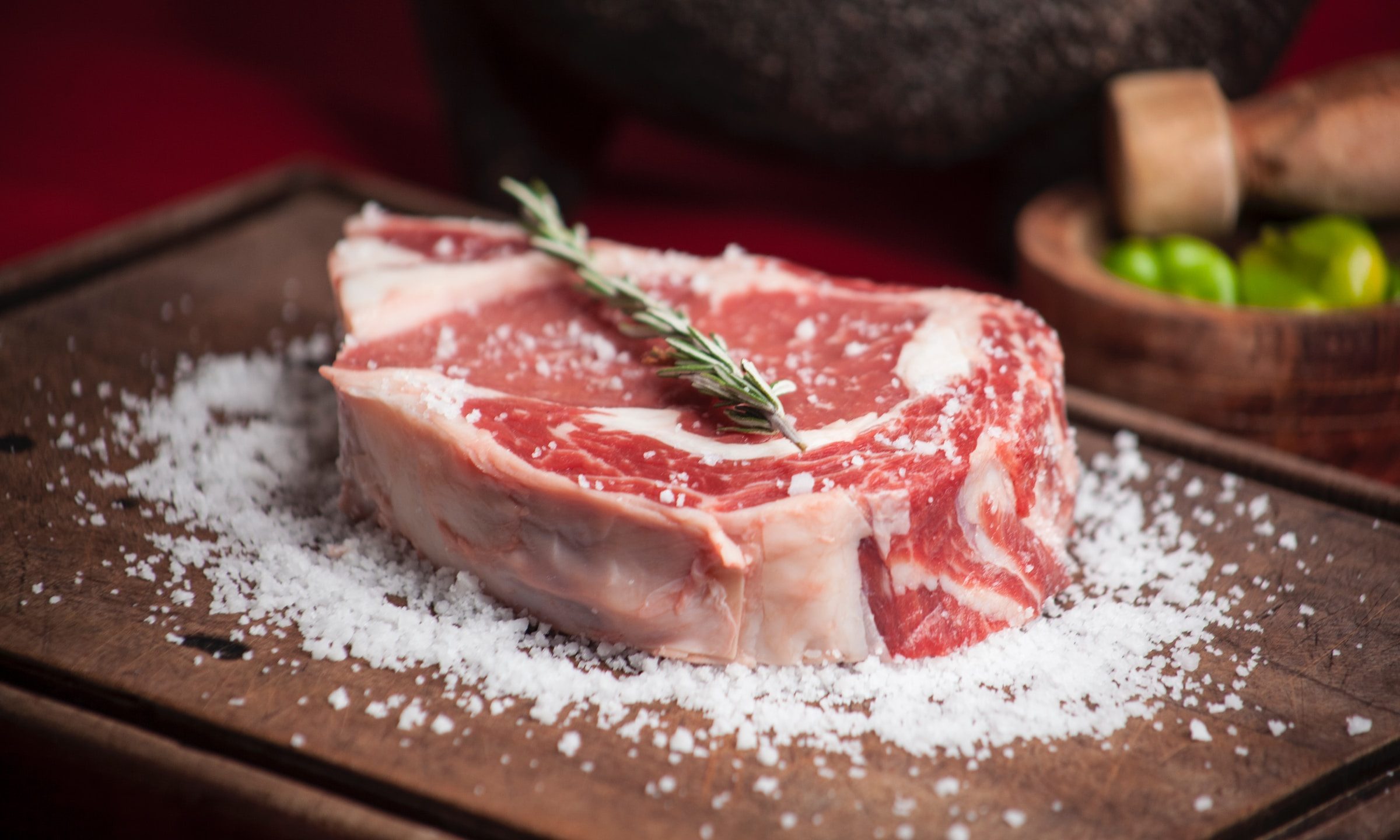
When shopping for a great steak at our favorite local butcher, we consider many things. Cut, style, color, marbling, and USDA grading are all elements to think about when eyeing those beautiful cuts behind the glass. But what about the steak’s thickness? Does it matter? And if so, why? We are here to answer that question and help you avoid the potential pitfalls of steaks that haven’t been properly butchered.
Size matters…or does it?

There are plenty of delicious steak cuts all across the thickness spectrum. Thinner cuts of beef, like skirt steak, are absolutely delicious when cooked quickly over high heat. And then there are the New Yorks and the Ribeyes of the steak world, flirtatiously tempting us with their thick and juicy, meaty lusciousness. These are the steaks that benefit from a slightly slower cook. There’s a place for all cuts of steak in our kitchens, depending on the dish we happen to be preparing. It’s really just a matter of knowing which cooking method to use for the thickness of your steak.
Perhaps the most devastating thing that can happen in the kitchen is overcooked steak. You bought the ingredients, you lovingly tenderized and marinated your lovely filet, you followed all of the directions down to the letter, and still, you ended up with a steak that’s (cue the horror movie music) well-done. The culprit to blame may very well be the thickness – or rather, thinness – of your steak.
When searing a steak, heat penetrates into the meat, cooking it to (hopefully) your desired doneness. If that steak is on the thinner side, this process happens much more quickly. For this reason, we suggest at least a 1-inch thickness on all steaks that you’ll be cooking (with the obvious exception of naturally thin steaks like skirt or flank).
What to do if your steak is too thin

If you’re reading this after having returned from the butcher with a steak that is cut too thin, worry not. All hope is not lost.
The best way to cook thinner cuts of steak is over high heat for short amounts of time. This allows the outside of the steak to char and develop a crust in a short period, saving the inside from overcooking. The aim should be to sear the steak without the heat penetrating too far inside. The best cooking method for this would be either a quick flash over extremely hot grill grates or in a pan that can retain a lot of heat, such as cast iron.
Depending on the thinness of your steak, you’ll want to sear each side for no more than two minutes.
What to do if your steak is too thick

When addressing the question, we must ask ourselves – can ever a steak be too thick? We would argue that there’s something about a ridiculously thick cowboy cut ribeye that is simply unparalleled in its ability to satisfy. If this is the hearty dish you’re craving, you’re going to need to know how to cook that beauty right, and we know just how to do that.
With thicker cuts such as these, you’ll want to use the reverse searing method. This method gives you the ability to cook your steak at a lower temperature in order to bring it to your desired doneness and then sear it over blazing hot heat to develop a golden crust. While this is the opposite of what most people do when cooking steak, it is actually a perfect method for thick cuts. A reverse sear makes it much easier for the cook to measure and meet their desired temperature. This method also creates a juicier, more tender and evenly cooked steak as it provides a shorter searing time, leaving all of those beautiful juices in your steak where they belong.
Learn how to perfectly reverse sear your steak here.
How thick should a steak be for grilling?

Over the high heat of the grill, thinner steaks may cook too quickly, becoming dry on the grill. Ideally, a steak that is going to be grilled should be at least 1 1/2 – 2 inches thick. The thickness of the steak will take longer to grill but will absorb the smokey, charred flavors in that extra time, which is one of the most delicious things about a great grilled steak. Depending on your desired doneness, you’ll want to keep an eye on the heat of your flame so that the inside of the steak has time to cook properly before the outside becomes overly charred.
How thick should a steak be for pan-searing?

When pan-searing a steak, it needn’t be as thick as one that is to be grilled. That said, a steak set for the pan should still be at least a full inch thick. Because there is more control over the heat of a pan, the thickness of a one-inch piece will allow the cook to render the steak down in its fat for added flavor without worry of drying it out.



